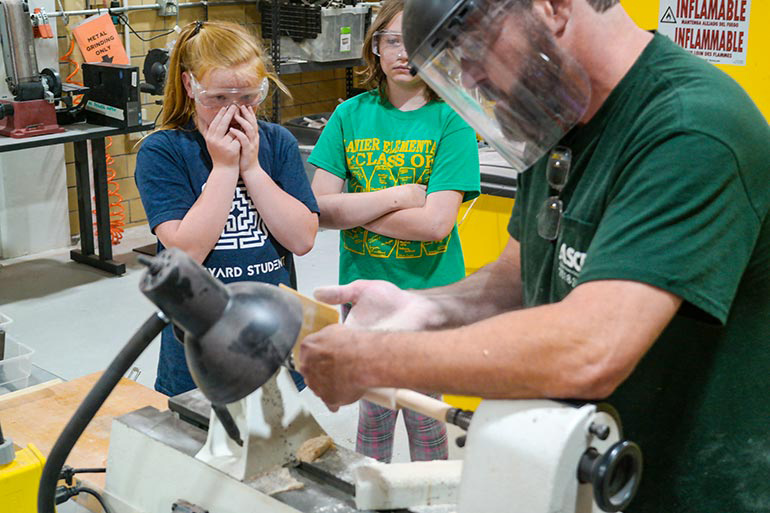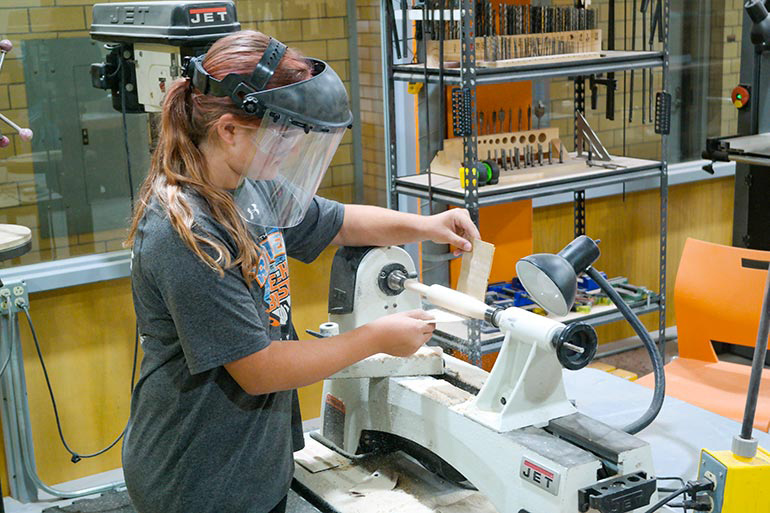UT’s STEM Scouts Camp Successful
Over the summer, the Tickle College of Engineering hosted a STEM camp for STEM Scouts from Lanier Elementary School and Karns Middle School, giving them exposure to concepts and tools used in engineering.
The relationship between UT and the STEM Scouts was developed through former Chancellor and Dean of the Tickle College of Engineering Wayne Davis, with the camp coming about thanks to James Gaddis of the Great Smoky Mountain Council of the Boy Scouts of America and Senior Lecturer in the Department of Materials Science and Engineering Chris Wetteland.
For the camp itself, the bulk of the scheduling, curriculum development, and teaching was performed by three Eagle Scouts, representing three different UT colleges:
- Nick Legaux: Known as Little Nick by the campers, Legaux is a sophomore in chemistry and has performed undergraduate research in polymer development with Associate Professor Brian Long. A Maryville native, he developed a trail system behind Maryville’s Coulter Grove Middle School for his Eagle Scout Project.
- Nick Van Son: Van Son is a sophomore in architecture and is performing undergraduate research with Professor David Matthews. Another Maryville native, his Eagle Scout Project developed a web-based photo album to help Alzheimer patients with memory loss.
- Ian Greeley: Greeley is a senior from Farragut in materials science and has performed research in the Scintillation Materials Research Center with Chuck Melcher for the last three years. Ian’s Eagle Scout project involved repairing and renovating an outdoor chapel at his church.
Additional UT camp helpers included Engineering Fundamentals Specialist Michael Allen, senior Mallory Stevenson from MSE, and the Great Smoky Mountain Council’s Jeramie Walkup, Abby Fink, and Tracy Slice.
The goal of the camp was to expose the STEM Scouts to a variety of hands on activities which culminated in with the printing of a 3D Space Derby Rocket, a build and race competition similar to the Pinewood Derby conducted by many Cub Scouts across the country.
In the Space Derby, rockets are fabricated from a balsam wood kit and travel horizontally on a wire propelled by rubber bands and a propeller. For the UT version, the campers first fabricated the rockets the traditional way and then were taught the skills to draw and 3D-print a rocket.
To build the traditional rocket the campers had to sand, cut, shape with a lathe, glue, paint, and assemble the final product. Additionally, campers had to fabricate the race track by using more advanced equipment, including cutting on the miter saw, using drills to assemble the frame, and apply the appropriate color paint to finish the track.
After racing the traditional rockets and 3-D printing the second set, students were then able to race both rockets and compare and contrast the various building styles.
STEM Scouts helps girls and boys learn about science, technology, engineering, and math through creative, hands-on activities, field trips, and interaction with STEM professionals. Using experiential activities and interaction with STEM professionals, the goal of the STEM Scouts program is to help young people grow in character and skills as they explore their curiosity about STEM fields.
The hope is that the students take that growing knowledge and translate it into STEM-related careers. While the program focuses on future careers in STEM, it is ultimately designed to be challenging, thought-provoking and, most importantly, fun.
STEM Scouts is a coed program of the Boy Scouts of America and offers a scouting experience with less emphasis on the outdoors. STEM Scouts follows the Scout Oath and Law with the goal of producing young men and women who are leaders, display confidence, realize their skills and limitations, are respectful of others’ opinions, are problem solvers in all aspects of life, look for opportunities to serve others, are good citizens and demonstrate integrity in all phases of life.

